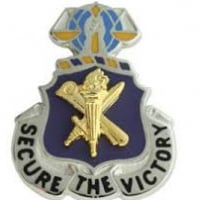SmartSDR v4.1.3 | SmartSDR v4.1.3 Release Notes
SmartSDR v3.10.15 | SmartSDR v3.10.15 Release Notes
The latest 4O3A Genius Product Software and Firmware
Need technical support from FlexRadio? It's as simple as Creating a HelpDesk ticket.
Installation of "VAC" in Windows -10
Is there an alternative software available? My FLEX Smart SDR & FLdigi installed and running properly - I'm otherwise ready to go! HELP PSE!
Tnx,
Earl - N1VP
Answers
-
Are you using SSDR? If so, you do not need VAC. When installing SSDR it should also install DAX which provides basically the same thing VAC provides.0
-
Send an e-mail to Eugene asking for support.0
-
If you haven't already tried it, try at boot up go into unsigned driver setup (see step by step using google getting into unsigned driver mode) and try to load VAC.
I had to do this with SmartSDR CAT and DAX drivers to get them to work properly on my WIN10 upgraded computer.
Hope this helps and 73's
Bret WX7Y0 -
What error are you getting? What problem are you seeing? Can you describe the specific symptoms you're seeing? Ultimately, the driver's author IS the one who provides ultimate support, but we'll try to help you here if you describe what you're seeing. Peter K1PGV0
-
I had the same issue with win7 and the vac driver I had to run win 7 in test mode to load it (VAC driver). However, vac is ONLY needed for powersdr. I am, not at all, disagreeing with what Peter just said, but if it worked on win7 and doesn't on Win10, why not just bag Win10? The fact I had to run Win7 in test mode because the author of the driver couldn't sign it made me not want to use psdr, or win 7.0
-
I tried that but he didn't respond!
0 -
My VAC installation survived the upgrade to Win10. Is 32bit version.
Andrew
0 -
Seconding Don's comments - if you're using SmartSDR, use the DAX product, not VAC. It works better, is supported by Flex, and doesn't require you to do too much configuring.0
-
Mine survived upgrade to WINDOWS 10, 64-bit from WINDOWS 7.0
-
I have it working now - the secret was in learning how to disable the "digitally signed driver requirement for unsigned drivers" ("VAC" is not a digitally signed driver). Installation was then straight forward and I am now up and running (using FLdigi and Flex PowerSDR 2.7). It also helps to read user guides supplied with software - shame on me).
Thanks to all who responded to my cry for "HELP!" - your help was appreciated!
73, Earl - N1VP
0 -
Earl,
I'm glad you got it working... but as far as I can tell, you shouldn't have to disable driver signing... should you?
I looked at the V4.14 file that's installed and the driver itself IS indeed signed correctly.
If you're good with what you're doing now, that's fine... I don't mean to make more work for you. But I seem to remember VAC being a properly signed driver (though it is not properly installed via a signed driver package), and looking at it just a few moments ago it still looks that way.
Peter
K1PGV
0 -
Hey Peter, if it isn't too involved would you mind explaining how to get it properly installed maintaining 'prod' mode? Subsequent to the arrival of the 6500 I uninstalled the VAC driver and placed Win 7 back in Prod mode. That pretty much means I can't use the 1500 any longer. So I suspect additionally Earl would benefit from knowing how to install it properly.
Thanks,
Walt
0 -
I'm not sure how the author instructs folks to install this driver. Does he specifically say to bypass signing?
There are two parts to kernel-mode code signing:
1) Signing the install package
2) Signing the driver executable image
The driver itself certainly looks like it's signed so that it will load (see below)... but it also looks like he hasn't created a signed driver package (which would entail having a .INF and a .CAT file)... is that right? Because I don't SEE this package in his ZIP archive (and I'd rather not try to run his setup program on my development machine).
The one interesting thing is the code signing certificate he's using expired in 2011... and he apparently signed the driver in 2010. If his code signing certificate is no longer valid, that would explain why he hasn't/can't create a proper installation package for his driver that'd allow it to be installed with "normal means."
When I installed VAC "back in the day" I don't remember having to bypass driver signing. But that was a long time ago, and I might have installed in on an x86 machine (where there IS No driver signing requirement).
I know, that's a relatively long but not a very helpful answer...
Peter
K1PGV-------------------------
D:signing>signtool verify /kp /v vrtaucbl.sys
Verifying: vrtaucbl.sys
Hash of file (sha1): 4E198F76DF1A4596E3F1EF7B7CDFA63D76145F43Signing Certificate Chain:
Issued to: Class 3 Public Primary Certification Authority
Issued by: Class 3 Public Primary Certification Authority
Expires: Tue Aug 01 19:59:59 2028
SHA1 hash: 742C3192E607E424EB4549542BE1BBC53E6174E2Issued to: VeriSign Class 3 Code Signing 2009-2 CA
Issued by: Class 3 Public Primary Certification Authority
Expires: Mon May 20 19:59:59 2019
SHA1 hash: 12D4872BC3EF019E7E0B6F132480AE29DB5B1CA3Issued to: NTONYX Ltd.
Issued by: VeriSign Class 3 Code Signing 2009-2 CA
Expires: Sun Jan 09 19:59:59 2011
SHA1 hash: 7B844A273AC2BBD53A23D278F716FC6B43E8AC2EThe signature is timestamped: Wed Apr 07 23:44:00 2010
Timestamp Verified by:
Issued to: Thawte Timestamping CA
Issued by: Thawte Timestamping CA
Expires: Thu Dec 31 19:59:59 2020
SHA1 hash: BE36A4562FB2EE05DBB3D32323ADF445084ED656Issued to: VeriSign Time Stamping Services CA
Issued by: Thawte Timestamping CA
Expires: Tue Dec 03 19:59:59 2013
SHA1 hash: F46AC0C6EFBB8C6A14F55F09E2D37DF4C0DE012DIssued to: VeriSign Time Stamping Services Signer - G2
Issued by: VeriSign Time Stamping Services CA
Expires: Thu Jun 14 19:59:59 2012
SHA1 hash: ADA8AAA643FF7DC38DD40FA4C97AD559FF4846DECross Certificate Chain:
Issued to: Microsoft Code Verification Root
Issued by: Microsoft Code Verification Root
Expires: Sat Nov 01 09:54:03 2025
SHA1 hash: 8FBE4D070EF8AB1BCCAF2A9D5CCAE7282A2C66B3Issued to: Class 3 Public Primary Certification Authority
Issued by: Microsoft Code Verification Root
Expires: Mon May 23 13:11:29 2016
SHA1 hash: 58455389CF1D0CD6A08E3CE216F65ADFF7A86408Issued to: VeriSign Class 3 Code Signing 2009-2 CA
Issued by: Class 3 Public Primary Certification Authority
Expires: Mon May 20 19:59:59 2019
SHA1 hash: 12D4872BC3EF019E7E0B6F132480AE29DB5B1CA3Issued to: NTONYX Ltd.
Issued by: VeriSign Class 3 Code Signing 2009-2 CA
Expires: Sun Jan 09 19:59:59 2011
SHA1 hash: 7B844A273AC2BBD53A23D278F716FC6B43E8AC2ESuccessfully verified: vrtaucbl.sys
Number of files successfully Verified: 1
Number of warnings: 0
Number of errors: 0D:signing>
-------------------------
1 -
:-(
0 -
Thanks Peter. If I understand you correctly, the only way I could reinstall that on win7 is to force win7 back to test mode. That struck me as strange at the time in that it not only didn't put just the driver in test mode it put the entire OS in test mode. Perhaps that was not necessary but that's the only thing I could find on Google. Further sounds like what you're implying is rather than put the entire OS and test mode one could put it in a mode such that it would allow unsigned drivers which seems less severe than test mode. What was interesting is once in test mode down at the bottom right of the screen there it was in and white lettering TEST.0
Leave a Comment
Categories
- All Categories
- 378 Community Topics
- 2.1K New Ideas
- 630 The Flea Market
- 8.2K Software
- 117 SmartSDR+
- 6.4K SmartSDR for Windows
- 183 SmartSDR for Maestro and M models
- 428 SmartSDR for Mac
- 271 SmartSDR for iOS
- 258 SmartSDR CAT
- 191 DAX
- 382 SmartSDR API
- 9.3K Radios and Accessories
- 37 Aurora
- 256 FLEX-8000 Signature Series
- 7.2K FLEX-6000 Signature Series
- 946 Maestro
- 55 FlexControl
- 865 FLEX Series (Legacy) Radios
- 923 Genius Products
- 462 Power Genius XL Amplifier
- 336 Tuner Genius XL
- 125 Antenna Genius
- 297 Shack Infrastructure
- 209 Networking
- 459 Remote Operation (SmartLink)
- 144 Contesting
- 787 Peripherals & Station Integration
- 139 Amateur Radio Interests
- 1K Third-Party Software





